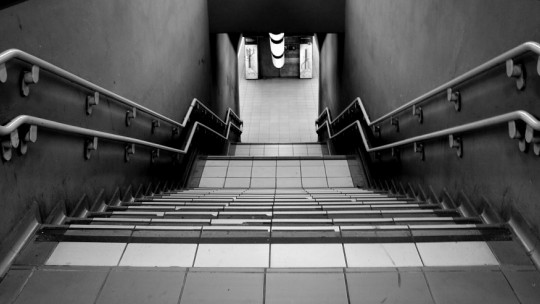
Stairs are a structure that makes our daily lives easier and makes our lives much simpler. While for many of us, stairs can be of great help, some individuals experience symptoms of anxiety and fear when they see them or when they imagine them. This is what is known as bathophobia or fear of stairs In this article we will discuss this topic and delve into its causes, symptoms and treatment.
There are different types of phobias, and, in fact, they are one of the most common psychological disorders. Although many people may suffer from a pathological fear when they have to get on a plane or when they are close to a spider, it is not very common for people to develop a phobia of stairs.
What is batmophobia
Stair phobia is an anxiety disorder, in which the main symptoms are extreme anxiety, fear and the attempt to avoid the feared stimulus. Although using stairs can be a practical experience, the batmophobe suffers great discomfort
Phobias are usually classified into three types: social phobia, agoraphobia, and specific phobias. The latter refer to the irrational fear that an individual suffers from objects, animals, activities or specific situations such as snakes, driving a car or flowers.
You can learn more about agoraphobia or social phobia in the articles:
Causes of phobia of stairs
The irrational fear of stairs can be associated with the fear of heights or falls, but it is a disorder in its own right. While climbing stairs can be a good source of exercise, people with this mental disorder They will avoid using the stairs at all costs, since in many buildings there is the possibility of taking an elevator, in most cases it is not a problem for the person who suffers from it. Now, if the only way to get somewhere is up the stairs, then it can be a complicated situation.
This phobia usually develops through classical conditioning, which is a type of associative learning. This occurs because the person, who has suffered a traumatic event (for example, a fall), can associate it with the fact that the reason for this is the stairs. If you want to know what exactly classical conditioning is, you can read the article “Classical conditioning and its most important experiments”.
Now, the traumatic experiences experienced by a person are not the only way to develop this disorder, but other individuals have developed batmophobia when seeing people fall down stairs in real life, but also when seeing actors fall down stairs. stairs in movies and end up with serious injuries. This can produce a phenomenon called vicarious conditioning, which is explained in the article “Vicarious conditioning: how does this type of learning work?”
Some experts affirm that human beings are predisposed to suffer phobias, since the emotion of fear occurs easily since it is adaptive Fear occurs through primitive and non-cognitive associations and, therefore, do not respond to logical arguments.
Symptoms of this phobic disorder
The symptoms of this disorder are the same as other phobias, but The difference is found in the stimulus that manifests it For example, in the case of coulrophobia, phobic symptoms appear in the presence of clowns.
The symptoms of this phobia can be classified as cognitive, behavioral and physical The first include catastrophic thoughts, anxiety, fear or confusion. Avoidance of the feared stimulus refers to behavioral symptoms. Finally, the physical symptoms are: nausea, headache, shortness of breath, excessive sweating, etc.
Treatment of this disorder
People who suffer from this disorder may be aware of their problem; however, It is not so easy to overcome it without the help of a psychologist Fortunately, psychotherapy has proven to be very effective for treatment, according to many scientific studies.
Cognitive behavioral therapy is one of the most widely used trends for treatment, and includes several effective techniques, such as relaxation techniques and exposure techniques. In reality, the best known is systematic desensitization, which includes the previous two. This technique exposes the patient to the phobic stimulus gradually but first learn a series of strategies to deal with this stimulus.
In addition to cognitive behavioral therapy, Mindfulness-based cognitive therapy and acceptance and commitment therapy have also been shown to provide excellent results.
New technologies and phobias
In recent years, advances in new technologies have also been used to treat phobias. Virtual reality has proven to be very useful and for that reason, many psychotherapists use it in their interventions.
But technology continues to advance, and with the advances in smartphones, apps have appeared that help treat phobias. You can learn about them in the article “8 apps to treat phobias and fears from your smartphone”.








